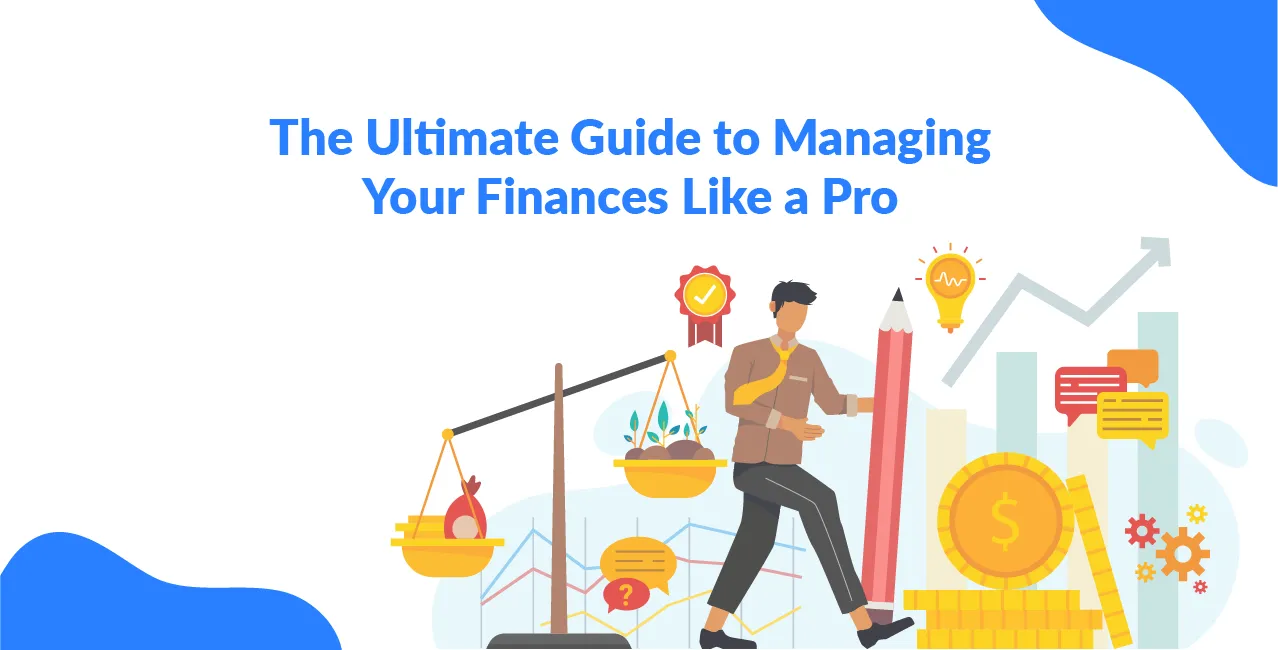
Author
LoansJagat Team
Read Time
5 Min
07 Jul 2025
The Ultimate Guide to Managing Your Finances Like a Pro
Have you ever looked at your bank balance and thought, "Where did all my money go?" In India, thousands of salaried professionals and small business owners face the same puzzle every month.
Earnings look decent, but savings never add up. The answer? It’s not just about how much you earn, but how you manage it.
In the first half of FY25, household net financial savings climbed to 7.3% of GDP—almost double year‑ago levels—driven by reduced liabilities and a stronger shift into capital market investments. This resurgence underscores the importance of disciplined saving and smart financial management.
Let’s break this down simply. You don’t need an MBA in finance. You don’t even need to be good at maths. You need the right system, discipline, and the mindset to grow your money.
Start With a Real Emergency Fund — Not a Myth
If you lose your job tomorrow or face a medical bill of ₹75,000—how will you pay?
That’s why an emergency fund is step one. This money is not for investing, not for spending. It’s there to keep you from panic when life hits.
Read More – Beginner’s Guide to Personal Finance
A safe place to keep it? Either a high-interest savings account or a liquid mutual fund. Don’t touch it unless it’s a real emergency.
Emergency Fund Examples
Let’s say you earn ₹50,000 per month. You can put away ₹5,000 per month into a liquid mutual fund. In 10 months, you’ll hit ₹50,000. That’s a good start.
Use SIPs. Auto-debit them. Don’t think. Just automate it.
Beat Inflation, Don’t Just Save
Let’s be honest. Fixed deposits are not helping you much today. If inflation is around 5% and your FD gives you 6%, your real gain is just 1%. Not enough.
You need to invest your money where it grows faster than inflation.
That’s why mutual funds, stocks, and even REITs are gaining traction.
Compare Investment Tools
Let’s say you invest ₹5,000 per month in an equity mutual fund. At 12% annual growth, in 10 years, you’ll have around ₹11,60,000. That’s not magic. That’s compounding.
Don’t jump in blindly. Use tools like SIP calculators. Stay invested. Don’t check your app every day.
Save Tax Without Losing Peace
Many people think tax planning is just Section 80C. But it’s more than that.
A smart tax plan means you reduce what you pay, without breaking your head with paperwork.
Today, 72% of Indian taxpayers have shifted to the new regime. It’s simpler but gives no deductions.
If you can’t exhaust 80C and 80D fully, it makes sense. But if you already invest in ELSS, term insurance, PPF, and pay home loan EMIs—it’s better to stay in the old regime.
Old Regime vs New Regime Tax Calculation
If you plan early in the year, you can use tax-saving mutual funds (ELSS), NPS, and health insurance to reduce your taxes by ₹40,000 to ₹75,000 easily.
Kill Bad Loans Before They Kill You
You already know this. But let’s write it out clearly. Not all loans are evil. A home loan gives tax benefits. Education loans help careers.
Also Read - Financial Planning Tools for Beginners
But credit card debt? That’s poison. Most people carry forward balance and pay 3% interest every month, that’s 36% a year.
Loan Type Comparison
Strategy: First clear credit cards. Then attack personal loans. Keep paying only minimum on good debt like home loans.
Debt snowball or avalanche methods both work. Choose one. Stick to it.
Automate, Diversify, Relax
The best investors don’t watch markets daily. They set a system.
Example system:
- ₹10,000 SIP in Equity MF (Growth)
- ₹4,000 SIP in Debt MF
- ₹2,000 into Gold ETF
- ₹1,000 in RD (short-term goals)
Rebalance once a year. Don’t get emotional. That’s what pros do.
You’re not timing the market. You’re riding the cycle.
If you’re 30 years old, try this allocation:
- 60% Equity
- 30% Debt
- 10% Gold
If you’re closer to 50, flip it. Safety becomes more important.
Conclusion
Managing money in India today isn’t about chasing quick returns. It’s about setting up a system that works when you're awake, and even when you sleep.
You don't need fancy degrees, and you don’t need to be rich to start. What you need is a budget that you can follow, an emergency fund that protects you, and investments that grow with time. Most importantly, you need to keep your lifestyle a step below your income. That’s the real wealth.
Whether you're 25 or 45, salaried or self-employed, the sooner you take control, the easier it gets. Stop waiting for the perfect moment. Start with ₹1,000 if that’s all you have. But start.
Because financial freedom is not a dream. It’s a discipline.
FAQs
1. How do I manage finances if I’m just starting with ₹25,000 per month salary?
Start with small SIPs, ₹1,000 in ELSS, ₹500 in gold, ₹500 in RD. Keep a ₹10,000 emergency fund. Don’t borrow unless urgent.
2. Is it okay to use credit cards for all expenses?
Yes, but only if you pay the full amount before the due date. Never carry forward. Use it as a payment tool, not a loan.
3. What’s the best monthly budget rule for Indian families?
Try the 50/30/20 rule. 50% needs, 30% wants, 20% savings. Adjust based on your EMIs and goals.
4. Should I invest in LIC policies for returns?
No. LIC is good for life cover but poor for wealth growth. Instead, buy term insurance + invest in mutual funds.
5. How can I manage finances as a freelancer in India?
Keep separate bank accounts for income and expenses. Save 30% for taxes. Build 6 months emergency fund before taking bigger risks.
About the Author

LoansJagat Team
‘Simplify Finance for Everyone.’ This is the common goal of our team, as we try to explain any topic with relatable examples. From personal to business finance, managing EMIs to becoming debt-free, we do extensive research on each and every parameter, so you don’t have to. Scroll up and have a look at what 15+ years of experience in the BFSI sector looks like.

Quick Apply Loan
Subscribe Now
Related Blog Post


